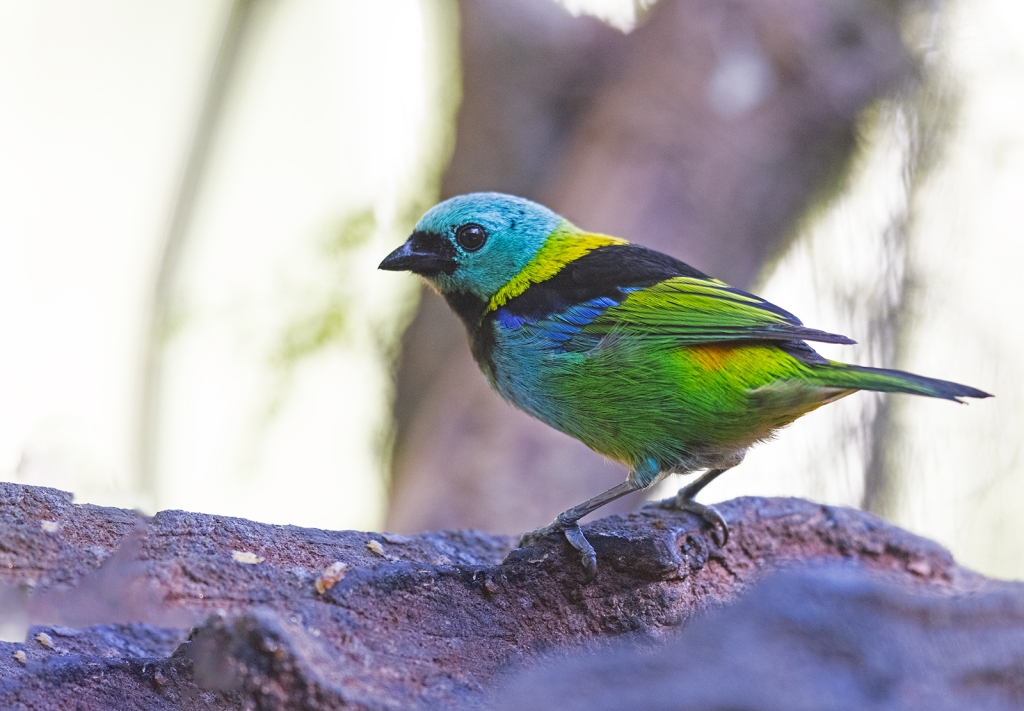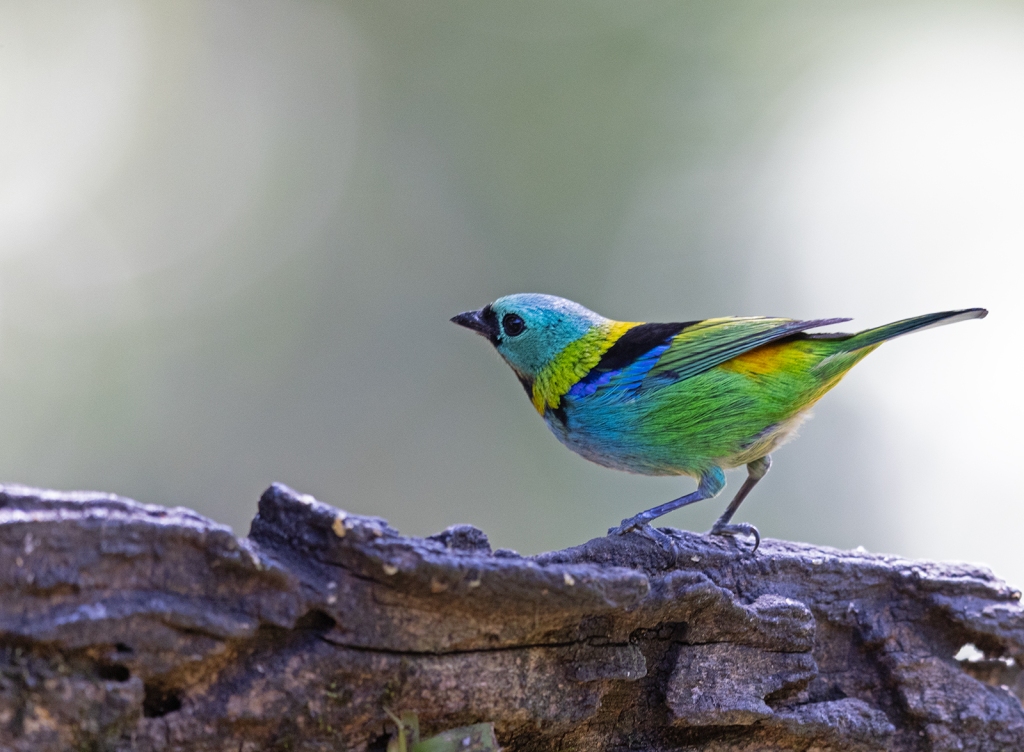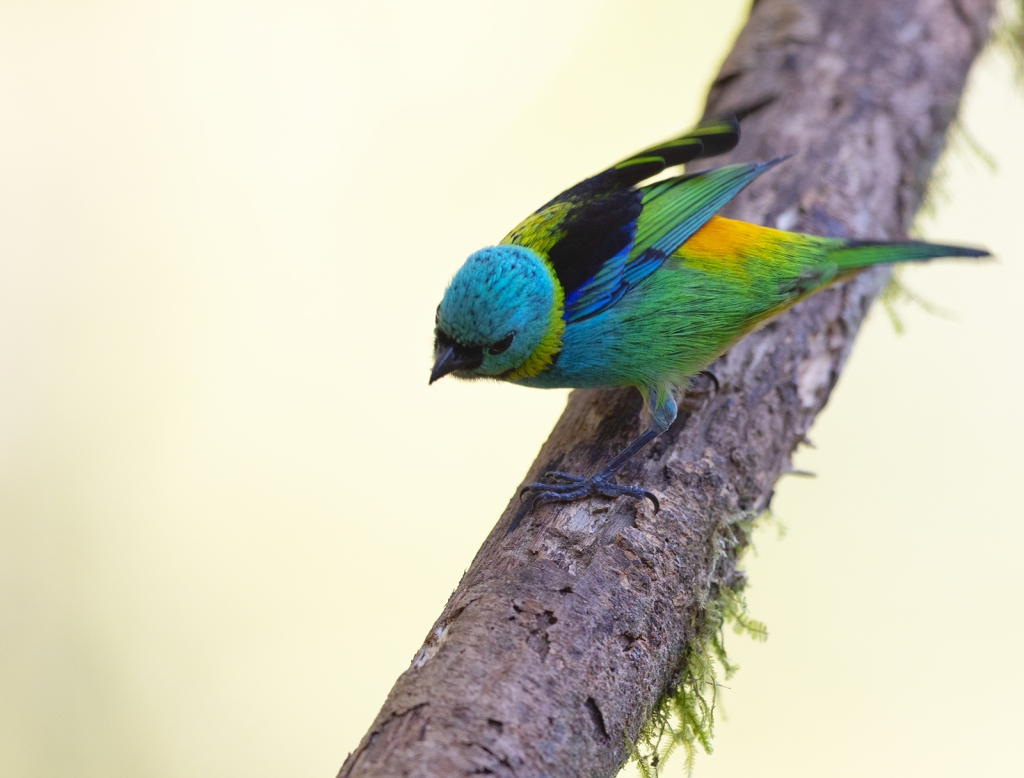Rather than work through all the photos WC has of another family of birds, for the next few weeks WC will update bird families already explored, adding new species photographed since those earlier posts. And WC will start with his very favorite family of birds, the Thraupidae, and specifically some new tanagers. WC posted Bird of the Week blog entries for some 25 tanager species back in 2018-2019. We’ll have a look at some additional tanager species.

And we’ll start with a genuinely spectacular species, the Green-headed Tanager, an Atlantic coast species found mostly in southeastern Brazil and in small parts of Paraguay and northern Argentina. It’s a species that didn’t just fall on the painter’s color palette; it rolled around on the palette for a while, too. And, in case bird photographers are wondering, WC did not increase the saturation in post-processing. This species really is as colorful as it appears here. Readers are right to be confused by the name: it doesn’t have a green head; the European who first reported the species, Philipp Ludwig Statius Müller, in 1766, must have had a really bad day.

Within its range, this species is a habitat generalist, but has some tendency to stay in the upper half of the canopy. It prefers intact Atlantic Forest, but will forage in second growth and forested shrubbery. It is not found in deforested areas, which describes a distressing percentage of the former Atlantic Forest of Brazil. In that habitat, it forages on insects and fruits, including cultivated fruits. WC watched Green-headed Tanagers foraging on catkins in Cercropia trees, but the birds were too far away to photograph.

The cup-like nest is constructed by both parents, concealed in dense foliage or in bromeliads. There are 2-4 eggs, incubated by the female. The eggs hatch after 15-17 days. The hatchlings remain in the nest, fed by the both parents, for as long as 35 days. After fledging, the fledglings are fed by the parents for as long as 75 days. Despite that lengthy interval, this species often raises a second brood; interestingly, the fledglings from the first brood aid in feeding their younger siblings. There’s no data on survivorship or populations.

Populations of Green-headed Tanagers steeply declined with the destruction of the Atlantic Forest habitat. Only about 8% of the original habitat remains. Ornithologists believe that enough of the remaining habitat still exists to preserve the species. The IUCN currently classifies this as a species of Least Concern but, like almost all Atlantic Forest species, that’s based on scant evidence.
For more bird photographs, please visit WC’s bird photo site, Frozen Feather Images.



What a beautiful bird! When I view your photos I often think of how photography has changed with digital cameras. I took a lot pictures by bracketing – an f-stop up and down – to help insure at least one good picture. Plus, my autowinder could really burn through the film. I bet you spend a chunk of time deleting photos after a bird trip, but you sure end up with a plethora of good ones! Be well. TR
LikeLike
So, the Green-headed Tanager has a blue head.
And you wonder why I will never take up birding.
LikeLike